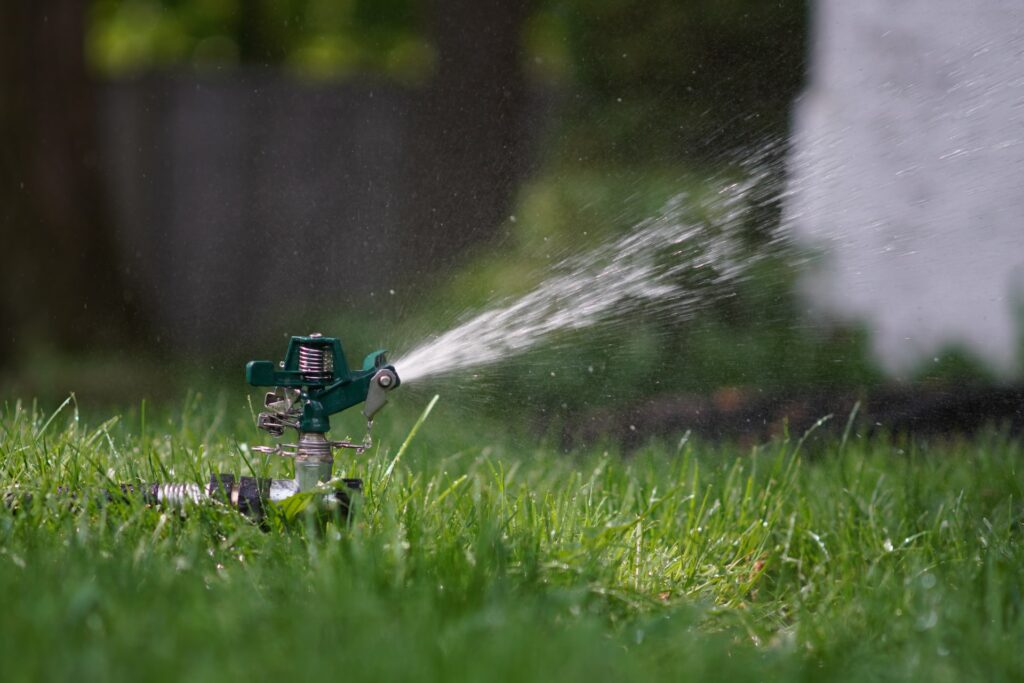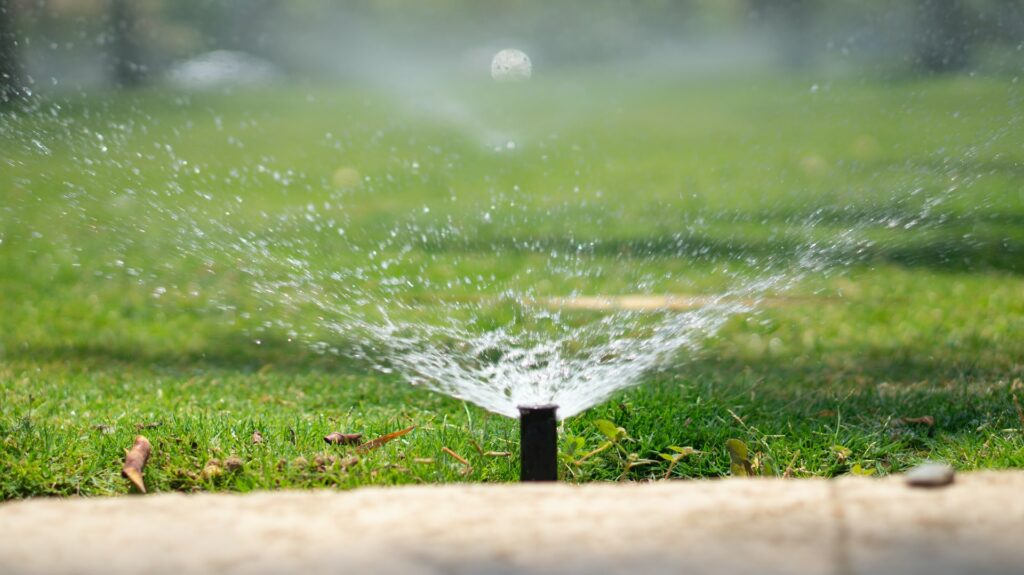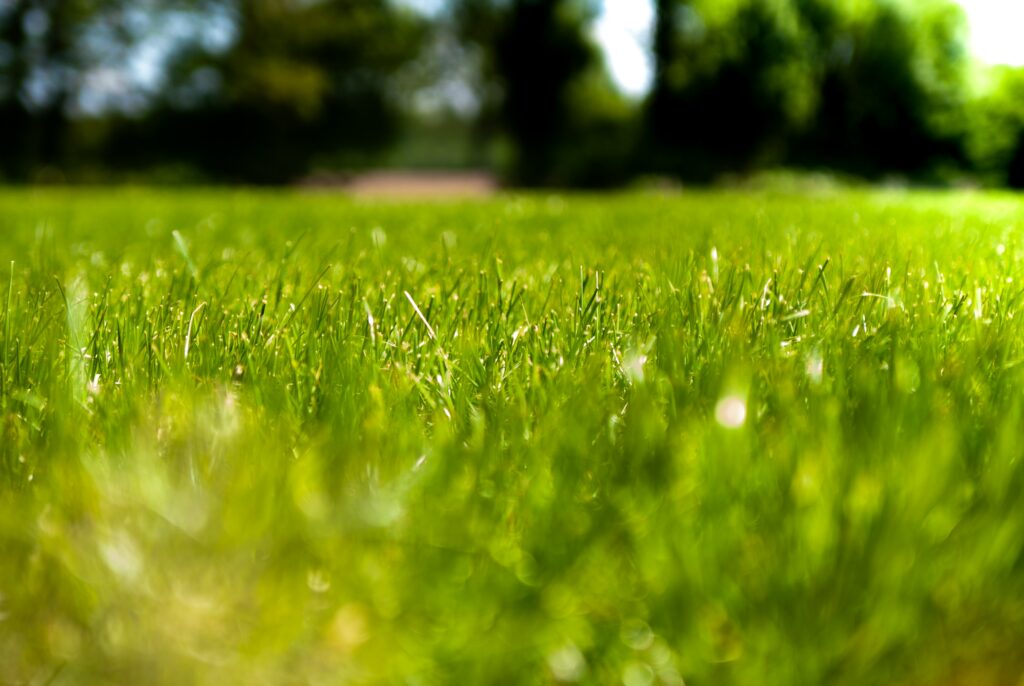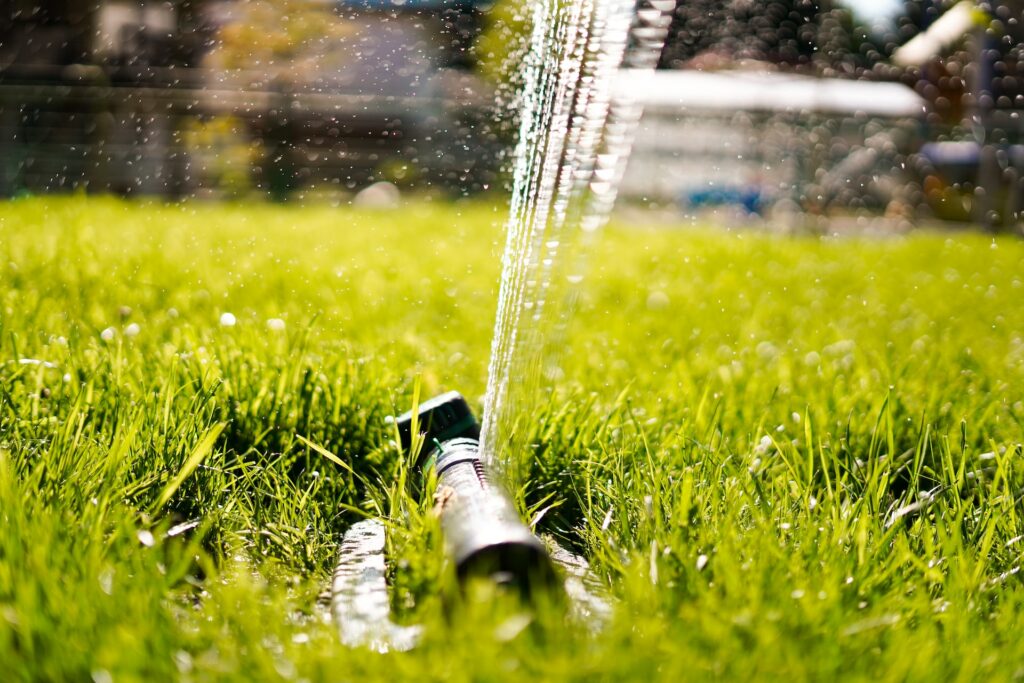The key to a healthy lawn is to give it the right amount of moisture. How often, you ask? Water your yard when the top inch of soil feels dry, but before it dries out completely. Lawns that are grown in areas with mild climates don’t require as much watering as those in hot, dry areas do.
If you water your grass too much, you run the risk of making it grow faster than it normally would. You also want to avoid creating unnecessary puddles.
The best way to water your lawn without sprinkler system is with a water wand that distributes water in a vertical pattern at high pressure instead of an open spray pattern. A hose without any attachments will not achieve the same results and may waste large amounts of water.
Why do I need to water my lawn?
Even if the instructions on the seed package say that the lawn mixture is unpretentious and that you don’t need to water the lawn at all, don’t trust this completely.
To keep your lawn looking attractive, you should water it regularly. And if you have purchased a lawn that does not require frequent maintenance, it will be enough to follow simple rules to maintain the appearance of the green “carpet”.
In addition to the natural moisture that enters the soil and promotes the growth of grass, every lawn should be additionally watered.
What is the purpose:
- Grass growth. Grass needs plenty of moisture to grow evenly. Growing grass provides softness to the turf, which is especially important when caring for lawns you intend to walk on.
- Even distribution of fertilizer. Most lawn growth fertilizers only take effect when you water your lawn. If you want a thick lawn, just water the lawn more often.
- Weed and disease protection. Deep watering prevents weeds, while surface watering promotes their growth. In addition, watering your lawn prevents the yellowing of the grass and many diseases.

What time is best for a watering lawn?
Many homeowners prefer to water their lawns in the morning and the evening. According to experts, the best time for watering is morning, which allows plants to use the water efficiently.
The lowest temperature of the day is in the morning and evening. Unlike in the evening, there is no strong wind in the morning. Low temperatures and the absence of strong wind help soil absorb water. While in the evening, waterdrops stay on the lawn; therefore, the fungus has a rich environment for spreading. So, the best time for watering the lawn is from 4 to 10 am.
Before giving your grass a refreshing drink, ensure it’s prepared to receive the water. To do this, cut it to a height of approximately 2 inches – leaving the young grass in place. The soil’s capability to retain moisture is then boosted by gathering the grass clippings with a sweeper.
The clippings form a barrier that stops too much heat from penetrating the soil, thus decreasing evaporation. By having moist soil, more water won’t be required and consequently, watering becomes simpler.
Watering schedule: Mowing your lawn on time is another crucial component. Longer grasses not only make watering more challenging, but they also make water reaching the ground more difficult. This must be avoided to conserve water and evenly soak the surface. So, to avoid a disastrous scenario, try to mow the lawn on time.

Best way to water lawn without sprinkler system: what is an alternative to a sprinkler system?
Drip irrigation system
If you’re looking for an irrigation system that uses less water, you can install a drip irrigation system. This system delivers water directly to the roots of your plants, so less water is lost to evaporation. You can also install a timer on your drip irrigation system, so it will water lawn only when needed.
Drip irrigators deposit water where it’s needed the most, at the plants’ root zones. They are especially useful if the water source is scarce because the water used to soak the lawn drips from a container directly toward the root portion of your plants. This method is the best because the roots directly absorb the water, making your lawn look good and the grass lush.
If you have a larger lawn, or if you live in an area with water restrictions, you may want to look into installing such a system. This system delivers water directly to the roots of your plants, so less water is lost to evaporation. You can also install a timer on this system, so it will water lawn only when needed.
Garden hose
If you want to water your lawn manually, you can use a garden hose. This is a good option if you have a small lawn, or if you only need to water lawn once a week. You can also attach a sprinkler to your garden hose to make watering your lawn easier.
If you have a small lawn, you may be able to get away with watering it manually with a garden hose or can. This is a good option if you only need to water your lawn once a week or less. You should consider the fact that using a gardening hose is time-consuming.

For larger lawns, a watering system may be the best option. Irrigation systems are designed to deliver water to the lawn in a controlled manner. This ensures that all areas of the lawn receive the proper amount of water and that none of it is wasted.
There are various types of irrigation systems available, so it’s important to do some research to determine which one is right for your lawn.
Manual sprinkler system
Manual sprinkler systems are an affordable, simple and convenient way to water lawn. The same sprinkler system, but without automatization. Only you decide when you want to water lawn. They’ll cost you about от $0.60 – $0.70 per square foot.
Hoover wand system
A hoover wand system is attached to your garden hose and moves parallel to the ground. A long tube with small holes drilled into it serves as the water-dispersing arm, the small tubes deliver water directly to the soil. Your hose’s pressure will force water downward in a jetting manner. A handle, similar to that of a hockey stick, extends into the earth.
As the wand system increases the water level to 10 to 12 inches above the ground, the handle allows you to stand erect. The water pressure allows it to penetrate deeper into the ground faster and more thoroughly than a drip system and sprinkler system.
DIY sprinkler systems
This is a way to water lawn without a sprinkler system, which merely requires a little engineering prowess. A proper DIY sprinkler systems instruction is within the scope limits of this article; however, you can be sure that the method is basic and uncomplicated.
You can design a comparable sprinkler system for a fraction of the expense of having it professionally installed by using hose valves, a sprinkler system timer, and all metal impulse sprinklers. Try to connect as many sprinklers as possible to maximize water flow.
The timer will help you set your DIY system to work like the more expensive automatic sprinklers or roaming sprinklers. There are internet resources to assist you in getting started.

Choosing the right method for your lawn
The best way to water your lawn depends on a few factors, such as the size of your lawn and the water restrictions in your area.
Sprinklers are not the only method of watering lawns, there are alternatives such as drip irrigation systems and hand watering with a hose or can.
If you have a smaller lawn, you may be able to get away with watering it manually with a garden hose or can. If you have a large lawn, or if you live in an area with water restrictions, you may want to look into installing a drip irrigation system. This system delivers water directly to the roots of your plants, so less water is lost to evaporation.

What is the most efficient way to water a lawn?
When it comes to watering your lawn, the most efficient way to water is with a drip irrigation system. This system delivers water directly to the roots of your plants, so less water is lost to evaporation. You can also install a timer on your drip irrigation system, so it will water your lawn only when needed.
Is it better to hand water or use a sprinkler?
There is no definitive answer to this question. It depends on a variety of factors, such as the size of your lawn, the climate you live in, and your water restrictions.
The soil type determines how much sprinkler systems use. Knowing which one you have, of course, can help you calculate how much water to use.
When it comes to gardening, one of the most important things you can do is ensure that you’re watering your plants correctly. That’s why it’s important to use sprinkler systems. Not only this will help you to prevent over-watering and under-watering, but it’ll also help to keep your plants healthy and ward off fungal diseases.
However, there are a few things to keep in mind when using sprinkler systems. For example, not all gardens are suitable for sprinkler systems, and it isn’t always efficient. Additionally, if you have a large garden or space, hand watering may be the better option for you.
Even if you do not have an installed automatic sprinkler system or traveling sprinkler system, you must have a lawn watering routine put in place to protect your grass-green lawn in the absence of a sprinkler system. Understand the soil type you’re dealing with since the amount of water needed varies.

Watering method for different types of lawns
The type of lawn you have will also affect the best way to water it. For example, if you have a Bermuda lawn, you should water it deeply and less frequently. This will encourage the roots to grow deeper, so the lawn will be more drought-resistant.
If you have a Kentucky bluegrass lawn, you should water it more frequently, but not as deeply.

Advantages and disadvantages of manual watering system
The advantages of the manual system are that it is the best method of irrigation for leveled fields, does not require any technical knowledge, is more useful in soils having lesser infiltration, and the irrigation area gets sufficient water.
Disadvantages of the manual system are that due to seepage in drains, wastage of water is caused, machines cannot be used in this method because during spray of insecticides or fertilizers, and there is an imbalance in the distribution of labor after the growth of crops.
FAQ
How do you water a rectangular lawn?
For watering a rectangular lawn, you can use a flat garden hose for watering and spraying or an oscillating sprinkler.
What is an alternative to a sprinkler system?
It can be a drip irrigation system – this system delivers water directly to the roots of your plants, so less water is lost to evaporation. A Garden hose is a good option if you have a small lawn, or if you only need to water the lawn once a week. A manual sprinkler system is the same sprinkler system but without automatization. A hoover wand system is attached to your garden hose and moves parallel to the ground.
What is the best watering system for grass?
The best way to water your lawn depends on a few factors, such as the size of your lawn and the water restrictions in your area.
Sprinklers are not the only method of watering lawns, there are alternatives such as drip irrigation systems and hand watering with a hose or can.
If you have a smaller lawn, you may be able to get away with watering it manually with a garden hose or can. If you have a large lawn, or if you live in an area with water restrictions, you may want to look into installing a drip irrigation system.
Conclusion
When it comes to watering, there is no one-size-fits-all solution. The best way to water your lawn without a sprinkler system depends on factors such as the size of your lawn, the climate you live in, and your water restrictions.
If you have a smaller lawn, you may be able to get away with watering it manually with a garden hose or can.
If you have a larger lawn, or if you live in an area with water restrictions, you may want to look into installing a drip irrigation system.
Read also: How to drain gas from lawn mower without siphon? Let’s do it!

